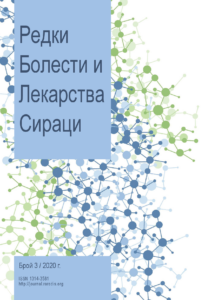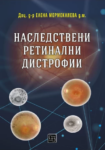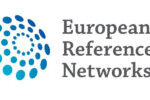 Mandibular gunshot wounds are aesthetically and functionally devastating, causing broken fractures and destruction of adjacent tissue depending on the size of the weapon. In this article, we present a case of a 46-year-old patient who was admitted as a matter of urgency after a suicide attempt with a modified gas pistol. The patient made a shot in the area of the chin of the lower jaw. A review X-ray of the skull – full face profile revealed a fracture of the mentum mandible with fragmentation. Intermaxillary fixation was also placed intraorally, by placing standard Vassilev splints and soft fixation. On the 3rd day after the operation, a control graph was made to assess the stability of fixation and stabilization. Read the whole article here.
Mandibular gunshot wounds are aesthetically and functionally devastating, causing broken fractures and destruction of adjacent tissue depending on the size of the weapon. In this article, we present a case of a 46-year-old patient who was admitted as a matter of urgency after a suicide attempt with a modified gas pistol. The patient made a shot in the area of the chin of the lower jaw. A review X-ray of the skull – full face profile revealed a fracture of the mentum mandible with fragmentation. Intermaxillary fixation was also placed intraorally, by placing standard Vassilev splints and soft fixation. On the 3rd day after the operation, a control graph was made to assess the stability of fixation and stabilization. Read the whole article here.
Featured posts
 Surgical therapy is the main option for the treatment of tongue cancer, while radiation therapy and chemotherapy are additional concomitant therapies. In this article, we present a case of a patient admitted for treatment with suspected cancer of the tongue. Lateral surface of the tongue on the right side during the examination revealed the presence of a lesion measuring 3.5×2.5. After histological examination, the patient was diagnosed with invasive highly differentiated keratinized squamous cell carcinoma of the tongue. Hemiglosectomy was performed, preserving the lingual artery, without neck lymph dissection. Postoperatively, the patient was prescribed radiotherapy of 30 grays in total. Read the whole article here.
Surgical therapy is the main option for the treatment of tongue cancer, while radiation therapy and chemotherapy are additional concomitant therapies. In this article, we present a case of a patient admitted for treatment with suspected cancer of the tongue. Lateral surface of the tongue on the right side during the examination revealed the presence of a lesion measuring 3.5×2.5. After histological examination, the patient was diagnosed with invasive highly differentiated keratinized squamous cell carcinoma of the tongue. Hemiglosectomy was performed, preserving the lingual artery, without neck lymph dissection. Postoperatively, the patient was prescribed radiotherapy of 30 grays in total. Read the whole article here.
 Introduction: Hereditary retinal dystrophies are a heterogeneous group of diseases with a relatively low frequency in the human population, characterized by involvement of different retinal layers, most often the complex retinal pigment epithelium – photoreceptors and causing severe visual impairment – loss of night vision, visual field, color vision and visual acuity in the initial stages and leading to progressive and severe loss of visual function by altering the retinal anatomy and function.
Introduction: Hereditary retinal dystrophies are a heterogeneous group of diseases with a relatively low frequency in the human population, characterized by involvement of different retinal layers, most often the complex retinal pigment epithelium – photoreceptors and causing severe visual impairment – loss of night vision, visual field, color vision and visual acuity in the initial stages and leading to progressive and severe loss of visual function by altering the retinal anatomy and function.
Objective: To present the modern diagnostic methods that provide accurate diagnosis of hereditary retinal dystrophies, which is essential for a proper therapeutic approach.
Methods and results: The development of medical science and technology has led to the introduction of new, increasingly sophisticated methods for early diagnosis of these diseases – the electrophysiological studies have become more complex and informative. Together with computer automated perimetry, optical coherence tomography (OCT), angioOCT, fluorescein angiography, fundus autofluorescence and adaptive optics, they allow very accurate topographical localization of the defect. And together with the advances in genetics, optogenetics, molecular biology, retinal biochemistry and regenerative medicine, they provide a better understanding of the mechanism of these diseases and increase the therapeutic opportunities.
Conclusion: The knowledge of modern methods of diagnosis of hereditary retinal dystrophies ensures accurate diagnosis of the different nosological groups, which is a prerequisite for a proper therapy. Read the whole article here.
“An Unknown Rare Disease in Bulgaria – Tarlov Cysts” is one of the topics that were discussed during the XI National Conference on Rare Diseases and Orphan Drugs, held on 11-12 September 2020 at the Virtual Congress Center of the Institute of Rare Diseases . The lecture is presented by Mrs. Monika Marinova, founder of the Association of Tarlov Patients in Bulgaria – Treatment without borders and a member of the National Alliance of People with Rare Diseases. Watch the full video on the YouTube channel of the Institute of Rare Diseases.
 Since its inception, the paradigm of health technology assessment (HTA) has been constantly evolving. This is a completely natural process given the development of medical science and the accelerated penetration of innovative health technologies.
Since its inception, the paradigm of health technology assessment (HTA) has been constantly evolving. This is a completely natural process given the development of medical science and the accelerated penetration of innovative health technologies. The new issue of our scientific journal Rare Diseases and Orphan Drugs is now online. The issue contains 8 publications on various topics. The editorial is “Regulation (EC) № 141/2000 for orphan medicinal products – 20 years later”.
The new issue of our scientific journal Rare Diseases and Orphan Drugs is now online. The issue contains 8 publications on various topics. The editorial is “Regulation (EC) № 141/2000 for orphan medicinal products – 20 years later”.
This year marks the 20th anniversary of the entry into force of the Regulation (EC) № 141/2000 on orphan medicinal products. This legislation determines the criteria for the designation of orphan medicinal products for the prevention, diagnosis and treatment of rare conditions, as well as provides incentives for their research, development and marketing. Although rare diseases appear in some earlier documents of the European legislation, this regulation is the first to specifically and exclusively address the problems of people with rare diseases and their families in Europe.
Twenty years later, it is time for reconsideration. In this context, the European Commission conducted a series of public consultations with various stakeholders, followed by a study of the effect and results of Regulation (EC) № 141/2000. There are many reasons for satisfaction, but the identified problems are not few. However, on the most important issue – adequate access of patients with rare diseases to therapy with orphan drugs – the success is partial. Yes, the number of orphan drugs with a marketing authorization in the EU is significant. But at the same time, there are huge inequalities in access to them across member states. A significant part of these therapies remain inaccessible to Eastern European patients. Read the whole article here.
 The monograph “Hereditary retinal dystrophies” by Assoc. Prof. Dr. Elena Mermeklieva describes the nature of hereditary retinal dystrophies, which are genetic diseases from the group of “rare eye diseases”. The etiopathogenesis, the clinical presentation, the modern diagnostic methods, as well as the possibilities and perspectives for treatment of the separate nosological entities are described in detail. The most up-to-date scientific information on the topic is presented, as well as interesting examples from the author’s practice. The social aspects related to these rare but severely disabling diseases are also considered.The topic would be of interest to ophthalmologists, geneticists, electrophysiologists, molecular biologists, optometrists and social workers, as the right care for these patients requires close collaboration and good cooperation between all these specialists.
The monograph “Hereditary retinal dystrophies” by Assoc. Prof. Dr. Elena Mermeklieva describes the nature of hereditary retinal dystrophies, which are genetic diseases from the group of “rare eye diseases”. The etiopathogenesis, the clinical presentation, the modern diagnostic methods, as well as the possibilities and perspectives for treatment of the separate nosological entities are described in detail. The most up-to-date scientific information on the topic is presented, as well as interesting examples from the author’s practice. The social aspects related to these rare but severely disabling diseases are also considered.The topic would be of interest to ophthalmologists, geneticists, electrophysiologists, molecular biologists, optometrists and social workers, as the right care for these patients requires close collaboration and good cooperation between all these specialists.
The Importance of Reference Centers and Registries for Rare Diseases: The Example of Alpha-1 Antitrypsin Deficiency
 Alpha-1 antitrypsin deficiency (AATD) is a rare and underdiagnosed disease that is associated with the development of liver disease in adults and children and pulmonary emphysema in adults. Several studies have shown that there is limited knowledge about the disease and its diagnosis among health care providers, and there is an important inequity in the access to specialized care and appropriate treatment across Europe. The European Commision and the European Respiratory Society (ERS) recommend that the care of patients with AATD must be organized in reference centers at national or regional levels. These reference centers must provide optimal clinical care in terms of adequate diagnostic techniques, such as phenotyping and genotyping, and ensure access to treatment according to guidelines. Reference centers should also provide continuous medical education for health care professionals, genetic counseling, collaboration with patient associations and promote collaborative research and clinical trials with new and existing treatments for the disease. These centers must have a registry of their activity and collaborate with large, international, multicenter registries, such as the European Alpha-1 antitrypsin Deficiency Research Collaboration (EARCO) international registry, which is endorsed by the ERS, and aims to recruit up to 3,000 patients over a period of three years and prospectively follow them to better understand the natural history of the disease and the impact of different treatments on outcomes in a real life setting. International collaboration and standardized collection of high-quality prospective data will provide new insights into the clinical manifestations and prognosis of AATD. For more information click here.
Alpha-1 antitrypsin deficiency (AATD) is a rare and underdiagnosed disease that is associated with the development of liver disease in adults and children and pulmonary emphysema in adults. Several studies have shown that there is limited knowledge about the disease and its diagnosis among health care providers, and there is an important inequity in the access to specialized care and appropriate treatment across Europe. The European Commision and the European Respiratory Society (ERS) recommend that the care of patients with AATD must be organized in reference centers at national or regional levels. These reference centers must provide optimal clinical care in terms of adequate diagnostic techniques, such as phenotyping and genotyping, and ensure access to treatment according to guidelines. Reference centers should also provide continuous medical education for health care professionals, genetic counseling, collaboration with patient associations and promote collaborative research and clinical trials with new and existing treatments for the disease. These centers must have a registry of their activity and collaborate with large, international, multicenter registries, such as the European Alpha-1 antitrypsin Deficiency Research Collaboration (EARCO) international registry, which is endorsed by the ERS, and aims to recruit up to 3,000 patients over a period of three years and prospectively follow them to better understand the natural history of the disease and the impact of different treatments on outcomes in a real life setting. International collaboration and standardized collection of high-quality prospective data will provide new insights into the clinical manifestations and prognosis of AATD. For more information click here.

This video explains to patients affected by rare, low prevalence and complex diseases what the European Reference Networks (ERN) are and how they might support them to identify diagnosis or treatment, in the case their health professional considers the support of the ERNs is necessary. The video is available in Bulgarian on European Commission website: https://europa.eu/!kP76Cq
Challenges for patients with congenital adrenal hyperplasia and their doctors and parents
“Challenges for patients with congenital adrenal hyperplasia and their doctors and parents” is one of the topics discussed during the XI National Conference for Rare Diseases and Orphan Drugs, held on 11-12 September 2020 at the Virtual Congress Venue of the Institute for Rare Diseases. The lecture is presented by Prof. Violeta Yotova, Director of the Expert Center for Rare Endocrine Diseases – Varna and Mrs. Vera Gledacheva, member of the National Alliance of People with Rare Diseases. Watch the whole video on the YouTube channel of the Institute for Rare Diseases.
